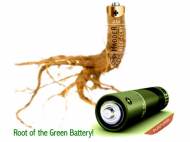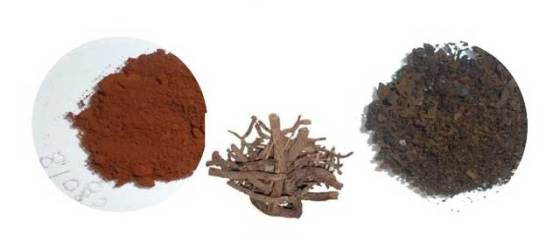Rose madder root’s purpurin could be used as battery electrode
 More than 3,500 years ago, civilizations in Asia and the Middle East used boiled rose madder roots to color fabrics in vivid colors such as orange, red and pink. Rose madder roots owe this ability to an organic compound in them named purpurin. Aside being a natural plant dye, purpurin could be used to power non-toxic and sustainable lithium-ion (Li-ion) batteries.
More than 3,500 years ago, civilizations in Asia and the Middle East used boiled rose madder roots to color fabrics in vivid colors such as orange, red and pink. Rose madder roots owe this ability to an organic compound in them named purpurin. Aside being a natural plant dye, purpurin could be used to power non-toxic and sustainable lithium-ion (Li-ion) batteries.
Most Li-ion batteries today rely on finite supplies of mined metal ores. For instance, cobalt is one of the materials used in Li-ion batteries and 30% of globally produced cobalt is used in battery production. The cobalt salt and lithium are combined at high temperatures to make a battery’s cathode, the electrode through which the electric current flows.
According to lead researcher Dr. Leela Reddy, a research scientist in Professor Pulickel Ajayan’s lab in the Department of Mechanical Engineering and Materials Science at Rice University, production and recycling of Li-ion batteries pumps an estimated 72 kilograms of carbon dioxide into the atmosphere for every kilowatt-hour of energy in a Li-ion battery.
These environmental issues inspired an interdisciplinary team of chemists from the City College of New York and researchers from Rice University and the U.S. Army Research Laboratory to search for a non-toxic and sustainable material that could be used as battery’s electrode.
Purpurin’s molecule six-membered (aromatic) rings are festooned with carbonyl and hydroxyl groups adept at passing electrons back and forth, just as traditional electrodes do. Aside being able to interact with electrons as electrodes, the researchers discovered that these aromatic systems are easily coordinate with lithium.
The purpurin electrode can be made and stored at room temperature in just a few easy steps. First, you need to dissolve the purpurin in an alcohol solvent and add lithium salt. When the salt’s lithium ion binds with purpurin the solution turns from reddish yellow to pink. When the solvent is removed, the production of a purpurin electrode is finished.
Aside , growing madder or other biomass crops to make batteries would soak up carbon dioxide and eliminate the disposal problem – without its toxic components, a lithium-ion battery could be thrown away. Current version of the electrode was tested in only about 50 cycles, and its capacity significantly drops along with cycles. However, the researchers are convinced they’ll be able to overcome these issues and make them competitive with currently used materials.
“We can say it is definitely going to happen, and sometime soon, because in this case we are fully aware of the mechanism”, said George John, a team member from City College Professor of Chemistry. “When you can generate something new or unheard of, you think of chemistry in a different way. That a natural material or dye can be used for a battery, that is exciting, even for me.”
The team estimates that a commercial green Li-ion battery may be only a few years away, counting the time needed to ramp up purpurin’s efficiency or discover and synthesize other similar molecules.
For more information, you can read the article published in journal Scientific Reports: “Lithium storage mechanisms in purpurin based organic lithium ion battery electrodes” [1.83MB PDF].










Leave your response!